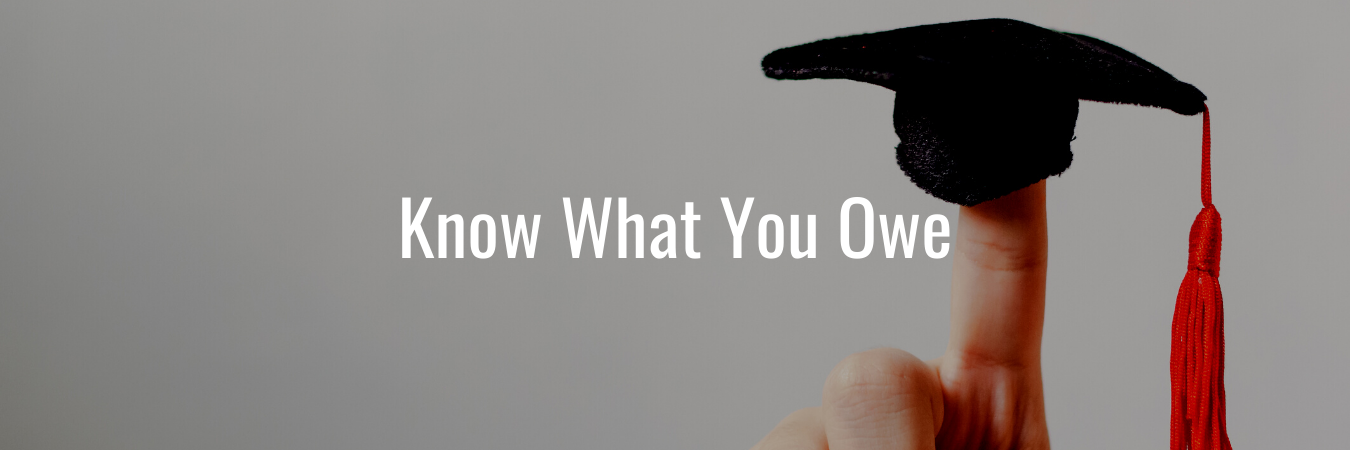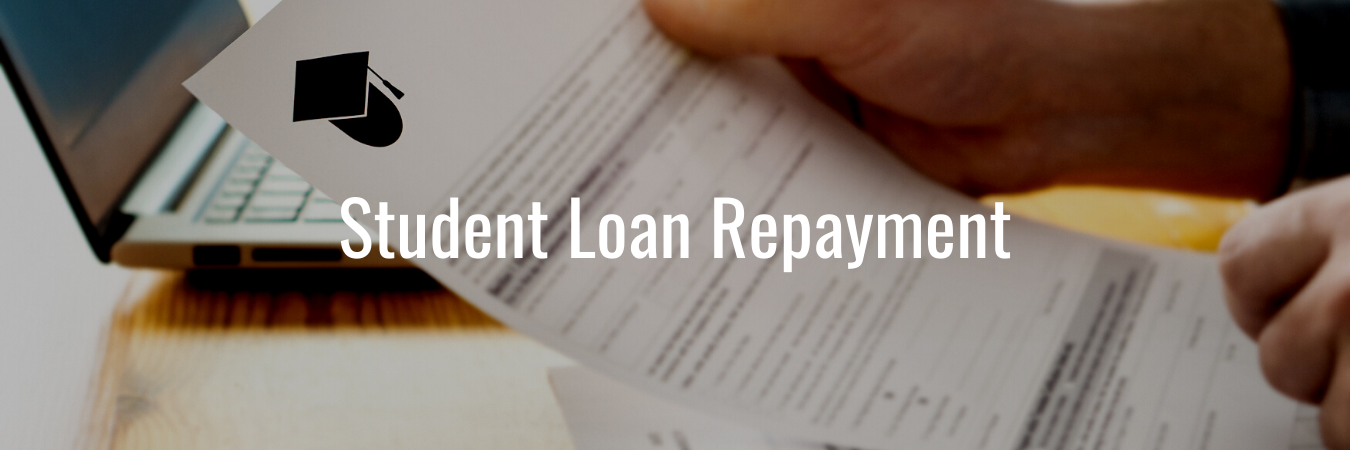Student Loans
Student loans can be complicated. For many, it is their first time taking on debt or signing a contract. However, student loans provide an avenue to education that many students and their families couldn't access otherwise. One of the best ways to manage your total education debt when you graduate is to enhance your financial knowledge and skills while you're still in school.
Types of Loans
There are many different types of student loans. The most common are federal student loans which are provided by the federal government. Private student loans make up the smallest portion of active student loans in existence, but they tend to have the most variety of eligibility criteria (e.g., minimum credit rating, cosigner) and terms (e.g., repayment schedule). Some states also offer student loans, though Illinois is not one of them. Individual schools may also offer loans; these types of loans are often called "institutional" or "campus-based" loans.
Federal Loans
All currently available federal loans are under the Direct loan program and include:
- Direct Subsidized loans are available to undergrads with financial need. The federal government pays interest while you are in school at least part time.
- Direct Unsubsidized loans are available to undergrad, grad, & professional students. The student does not need to demonstrate financial need.
- Direct PLUS loans are available to grad or professional students and parents of dependent undergrads, and borrowers must not have adverse credit history in order to qualify.
- Direct Consolidation loans allow you to combine all eligible federal student loans into a single loan with a single loan servicer.
Unsubsidized vs Subsidized
To qualify for either unsubsidized or subsidized federal student loans, the FAFSA must be completed.
The big differences between Direct unsubsidized and Direct subsidized is that the subsidized loan is reserved for undergrads with financial need and the government pays interest on this loan while the borrower is enrolled in school at least part time. Direct unsubsidized loans start accruing interest immediately after they have been disbursed, even if you’re still in school.
Private Loans
Not everyone is eligible for federal student loans. For example, international students are not eligible as well as families with a very high Student Aid Index or undocumented students. Some students may have an unmet need after all their aid, including federal student loans, have been applied to their education costs. In those cases, a private loan may be necessary to finish a degree. However, private lenders for education loans have their own priorities and restrictions for lending, so taking out these types of loans may be helpful for reaching your educational goals.
If you are in the market for a private loan, it's important to consider the following:
- You can review your credit reports at annualcreditreport.com at least once every 12 months for free to ensure the information being used by lenders to make credit decisions is accurate.
- Shop around for the best terms for your needs. Not all private loans are the same so applying for multiple loans in a short time frame will pool the hard inquiries on your credit report to limit the potential negative impact on any credit scores while allowing you to compare offers.
- Pay attention to the features of the loans like interest rate (APR), term (length of time to repay), repayment details (e.g., does the repayment start immediately or is there deferment, grace period, etc.?), and whether or not a co-signer is required.
Private loans differ so widely that it is hard to capture all of the components to consider when comparing loans, but learning more about loans and credit generally can help you find the best option for funding your degree if you do end up needing an education loan.
Institutional or Campus-Based Student Loans
Both Institutional and Campus-Based Student Loans are administered through your school. In most cases, your school is also responsible for servicing these loans. They may do so through the school or through a contracted vendor.
Campus-Based Student Loans are funded through both federal and institutional funds. If interested, you can learn more about these loan programs through the FSA Handbook. Institutional loans may be used interchangeably with Campus-Based loans, but they tend to leverage institutional funds, not a combination of both federal and institutional funds, so you may not have the same federal repayment options as the campus-based student loan programs available with federal funding.
- The Perkins Student Loan program, which is now retired and has not had any new loans disbursed through the program since the 2017-2018 academic year, is a Campus-Based Student Loan. Since the program is retired, some of the outstanding loans are still serviced by the school or contracted vendor employed by the school that administered it while some other loans have been transferred back to the Department of Education for servicing.
- The Health Professions Student Loan program is another type of campus-based student loan. This is similar to Perkins, but the requirements to qualify for this type of loan is decided by the Department of Health & Human Services.
Heartland ECSI is the University of Illinois System's contracted servicer for all University of Illinois Campus-Based Student Loans. You can learn more about the University's student loan servicer from University Bursar.
Learn More
Enroll in the Borrow course to learn more about receiving student loans and...
.png)
Debt Management While in School
Deferment
While you're in school at least part time, your federal loans are in deferment, meaning you do not have to make payments on the amount owed. However, unsubsidized loans will accrue interest during this time.
Awareness
An important aspect of managing your student loans is knowing where to go to find out how much you owe as well as who to pay. Depending on the type of loans you have, you may have to go to multiple places.
Federal Loans
You can access information about all of your federal loans through studentaid.gov. Log in with your FSA ID & password to access your dashboard and the Loan Simulator tool.
Campus Loans
Heartland ECSI is the loan servicer for institutional loans from the University of Illinois System. To access loans you received from UIUC, UIC, or UIS, you will need to log in.
Private Loans
If you don't know your lender(s), you can pull your credit reports for free once ever 12 months from annualcreditreport.com to find information about loans and other types of debt.
Reducing Debt
Before thinking about debt repayment strategies, you may look for ways to reduce your costs while in school.
A few ideas include:
- Work while you're in school
- Apply for scholarships and/or fellowships
- Look for ways to save on living expenses (e.g., share housing, cut food costs, etc.)
- Establish and maintain good credit to qualify for PLUS loans and get better terms on private loans
- Compare benefits of paying interest as it accrues while in school vs reducing/cancelling part of your loan
Urbana Virtual Job Board
The Virtual Job Board contains on campus jobs for UIUC students.
Budget
Building a realistic budget starts with an assessment of your goals, resources, and habits. Start habits that can help you now and in the future with Budget Hacks and Spooked by Spending Plans.
Chicago Symplicity
UIC houses all their on campus student job listings on Symplicity.
Springfield CareerConnect
Find and apply to UIS on campus jobs through CareerConnect.
sAve
The most variable expenses in your academic career include lifestyle choices like where to live and what to eat. Enroll in the Save Course to learn how to Save on Food, Travel, and more.
If you find that you do not need all of your loan money in the same semester you accepted it, you can reduce your loans online through the Award Letter by clicking the “Request Changes” link for student borrowers or through a printed form submission for Federal Direct Parent Plus Loan borrowers.
Additionally, if you anticipate that you will not need the full loan amounts offered to you, you can accept a partial amount online through your award letter. Make sure to take full advantage of subsidized loans before accepting unsubsidized loans in full, since subsidized loans do not accrue interest while you are in school.
Learn More
Enroll in the Borrow course to learn more ways to manage your student loan debt while in school through...

Repayment
Grace Period
For federal Direct loans, you have 6 months after graduation or dropping below part time status before you have to begin repayment.
Institutional and private loans may have a different Grace Period or none at all. Contact your servicers or schools to ask about your options after you leave school.
Repayment Plans
There are currently 8 different repayment plans to choose from for federal student loans.
Standard repayment is the default plan. If you do not choose another repayment plan, you will be automatically enrolled into this plan which requires 10 years or 120 payments of the same amount each month.
You can use the Loan Simulator to help decide what's the best choice based on your goals and needs before talking to your loan servicer.
Public Service Loan Forgiveness
There are a few different loan forgiveness or cancellation options available, but the largest and most broadly applicable is Public Service Loan Forgiveness which is only available for Direct loans.
In order to qualify, you must work full time at a qualifying employer, make payments under a qualifying repayment plan, and make 120 qualifying payments.
If you stay in the Standard Repayment Plan, you will pay off your loans by the time you qualify to have the rest of the amount owed forgiven under Public Service Loan Forgiveness.
Learn More
Enroll in the Borrow course to learn more about...
